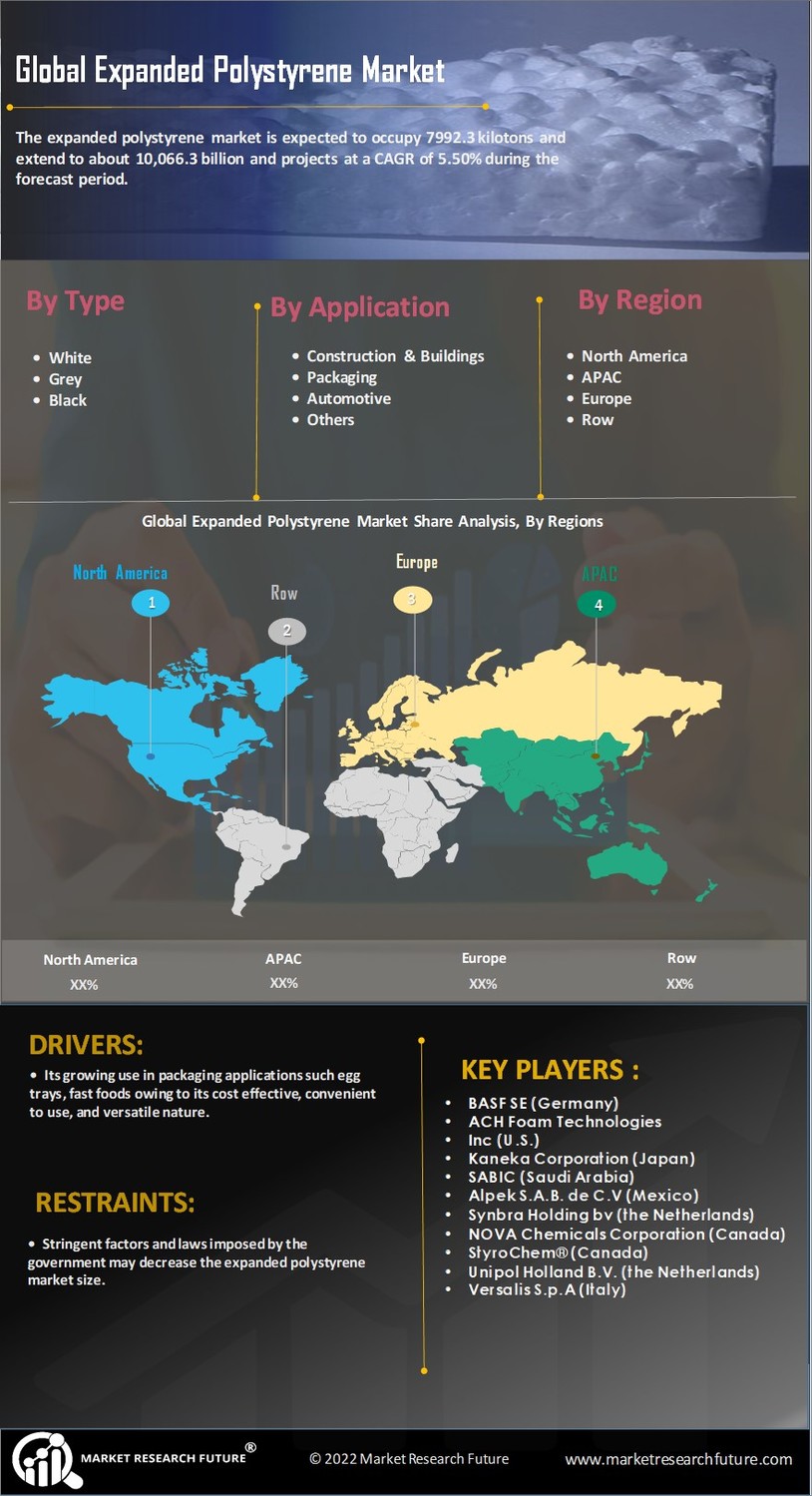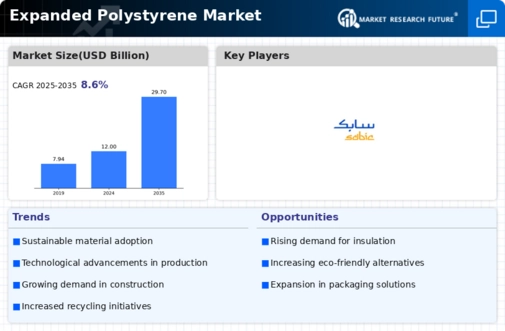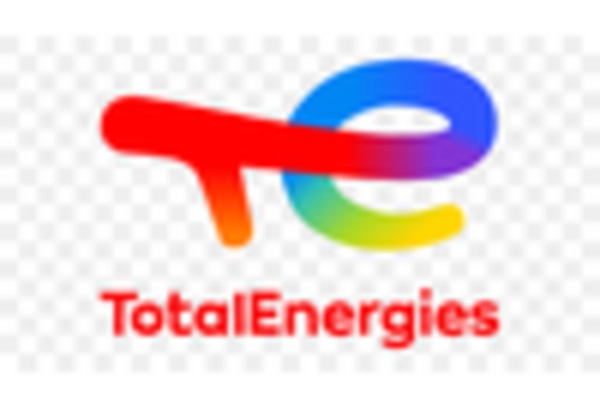Growth in Packaging Applications
The packaging industry is witnessing a transformation, with expanded polystyrene emerging as a preferred material for protective packaging solutions. The Expanded Polystyrene Market benefits from its lightweight nature and excellent cushioning properties, making it ideal for shipping fragile items. Recent data indicates that the packaging segment is projected to grow at a compound annual growth rate of over 4% in the coming years. This growth is attributed to the increasing e-commerce activities and the need for efficient packaging solutions that minimize damage during transit. As businesses seek to enhance their packaging strategies, the demand for expanded polystyrene is likely to rise, positioning it as a key player in the packaging market.
Rising Demand in Construction Sector
The construction sector is experiencing a notable surge in demand for materials that offer insulation and lightweight properties. Expanded Polystyrene Market is increasingly favored for its thermal insulation capabilities, which contribute to energy efficiency in buildings. In recent years, the construction industry has seen a shift towards sustainable building practices, where materials like expanded polystyrene are utilized to meet energy codes and regulations. The market for insulation materials is projected to grow, with expanded polystyrene expected to capture a significant share due to its cost-effectiveness and performance. As energy costs rise, the need for effective insulation solutions becomes paramount, further driving the demand for expanded polystyrene in construction applications.
Innovations in Recycling Technologies
The Expanded Polystyrene Market is experiencing a shift towards sustainability, driven by innovations in recycling technologies. Recent advancements have made it feasible to recycle expanded polystyrene, which was previously considered challenging. This development aligns with the growing emphasis on circular economy principles, where materials are reused and recycled to minimize waste. As companies adopt more sustainable practices, the ability to recycle expanded polystyrene could enhance its market appeal. The recycling of expanded polystyrene not only reduces environmental impact but also provides a cost-effective solution for manufacturers. This trend may lead to increased investments in recycling facilities, further bolstering the expanded polystyrene market.
Regulatory Support for Energy Efficiency
Regulatory frameworks are increasingly supporting energy efficiency initiatives, which directly impact the Expanded Polystyrene Market. Governments are implementing stricter building codes and energy efficiency standards that encourage the use of high-performance insulation materials. Expanded polystyrene, known for its superior insulation properties, is likely to benefit from these regulations. As energy efficiency becomes a priority, the demand for expanded polystyrene in residential and commercial buildings is expected to rise. This regulatory support not only drives market growth but also encourages manufacturers to innovate and improve their product offerings to meet evolving standards.
Expanding Applications in Automotive Industry
The automotive industry is exploring new materials to enhance vehicle performance and efficiency, leading to an increased interest in the Expanded Polystyrene Market. Expanded polystyrene is being utilized in various automotive applications, including interior components and packaging for parts. Its lightweight nature contributes to fuel efficiency, which is a critical factor for manufacturers aiming to meet stringent emissions regulations. The automotive sector is projected to grow, and with it, the demand for expanded polystyrene is likely to increase. As automakers seek to reduce weight and improve energy efficiency, expanded polystyrene may play a pivotal role in the future of automotive design.

















Leave a Comment